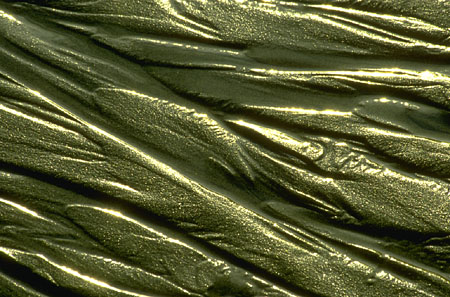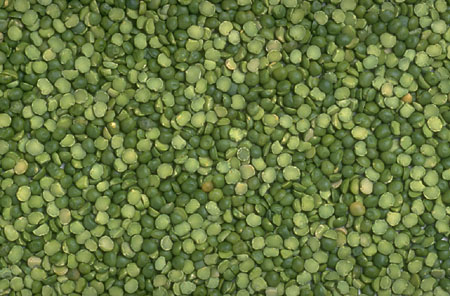LITR 5535: American
Romanticism

Sample Student Midterm 2006
Leigh Ann Moore
October 2, 2006
The American Gothic
One of the most famous examples of Gothic architecture is
the Cathedral of Notre-Dame, finished around 1200 A.D.
This gothic style is known by its massive, bulky countenance and pointed
arches. It is also characterized by flying buttresses, dark spaces,
and imposing statues and sculptures, such as gargoyles.
This style of architecture, termed gothic, has a literary equivalent in
literature of the American Renaissance. Literature
written by American writers, such as Washington Irving, Mary Rowlandson, and
James Fenimore Cooper, recreate these gothic spaces on the pages of their
stories. These writers move the
gothic ideal out of the European cathedral or castle and into the American
wilderness. By relocating the
gothic to the American landscape, these American authors create new spaces and
characters for their literature.
A
Narrative of the Captivity and Restoration of Mrs. Mary Rowlandson, written
by Mary Rowlandson, has gothic descriptions in the account of her captivity.
Although Rowlandson comes well before the American Renaissance, her
writing informs that of future writers. Rowlandson
uses the colors of black and red to depict the attack of the Indians on the
settlement of Lancaster: the black often representing evil, decay or hell and
the red representing passion. Rowlandson
states, “It is a solemn sight to see so many Christians lying in their blood,
some here, and some there, like a company of sheep torn by wolves, all of them
stripped naked by a company of hell-hounds, roaring, singing, ranting, and
insulting, as if they would have torn our very hearts out” (Rowlandson 137).
The blood (red) and the hell-hounds (black) representing passion and evil
or hell gives the reader a dark and disturbing picture of the slaughter taking
place. Rowlandson uses similar
wording when describing the actions of the Indians: “Oh the roaring, and
singing and dancing, and yelling of those black creatures in the night, which
made the place a lively resemblance of hell” (Rowlandson 138).
This description of the Indians compares and even insinuates that they
are demons from hell. Mary Brooks points out in her midterm essay that, “Once she
believes that the Indians and their actions are dictated by something beyond
human comprehension she no longer has to consider the possibility that any of
their actions can be merciful. That
her captors could be motivated by anything other than their devilish intentions
is simply incomprehensible to her” (Brooks).
Portraying the Indians as devils and the use of light and dark color play
adds to the gothic feel of the description. Rowlandson has relocated the gothic to the American
wilderness.
Although
Rowlandson represents the gothic using descriptions of the Indians and their
actions, Washington Irving and James Fenimore Cooper represent the gothic in
descriptions of the landscape. Washington
Irving’s The Legend of Sleepy Hollow uses gothic colors and ideas in
describing the countryside in and around Greensburgh (Tarry Town).
Irving writes, “He saw the walls of the church dimly glaring under the
trees beyond. … and now Ichabod
cast a look behind to see if his pursuer should vanish, according to rule, in a
flash of fire and brimstone” (Irving 2110).
This vision of the “church dimly glaring” (dark) and the “flash of
fire” uses the contrast of dark and light.
Irving also combines the gothic and the sublime in describing parts of
the small town, making it more wilderness than town:
The night grew darker
and darker; the stars seemed to sink deeper in the sky, and driving clouds hid
them from site. …
In the centre of the road stood an enormous tulip tree, which towered
like a giant above all the other trees of the neighborhood, and formed a kind of
landmark. Its limbs were gnarled
and fantastic, large enough to form trunks for ordinary trees, twisting down
almost to the earth, and rising again into the air.
(Irving 2108)
This combination of gothic and sublime truly moves the
reader from a dark, deserted castle to the American wilderness.
From the dark night to the gnarled and fantastic tree, Irving uses gothic
colors and language in new ways. Irving
has a way of applying emotion to the landscape and creating an environment his
reader can picture and feel. His
literary innovations in using the gothic influence other writers such as Poe in
his poem “The City in the Sea.” Although
Poe was born and died during Irving’s lifetime, influences on Poe’s writing
can be seen in this poem. Irving,
like his predecessor Rowlandson, has influence on future writers.
The height of all of these influences come together in James Fenimore
Cooper.
This
use of the gothic culminates in Cooper’s works: The
Last of the Mohicans and The
Deerslayer. Cooper is firmly
entrenched in the middle of the American Romanticism period and is the epitome
of the romantic gothic and sublime. In
The Last of the Mohicans, Cooper uses
the gothic in many different and unique ways.
Cooper uses the idea of secret as gothic in describing the path taken by
the adventurers; “When they reached the spot where the Indian stood, pointing
into the thicket that fringed the military road, a narrow and blind path, which
might, with some little inconvenience, receive one person at a time, became
visible. ... The route of the
detachment is known, while ours, having been determined within the hour, must
still be secret” (Cooper, Mohicans 21).
One facet of gothic is colors but another is the idea of secret paths or
chambers. Hidden places are part of
the gothic because they suggest dark and secret circumstances, whether
represented in physical space or mental subconscious.
Cooper uses another aspect of the gothic when talking about the
blockhouse where Hawk-eye and company hid; Cooper writes, the hill is “crowned
by the decayed block-house in question. ... Such memorials of the passage of struggles of man are yet
frequent throughout the broad barrier of wilderness, which once separated the
hostile provinces, and form a species of ruins …, which are in appropriate
keeping with the gloomy character of the surrounding scenery” (Cooper, Mohicans
125). In this description, Cooper expresses the gothic by using
decay and gloom. Another aspect of
this is the story behind how the hill was raised “by the bones of mortal
men” (Cooper, Mohicans 126). This description of landscape, death, and decay, all bringing
in stories of the past, combines to give an exceptional example of the gothic.
An additional aspect of the gothic that Cooper is fond of is air and
vapour. Cooper writes, “Here and
there, a red and fiery star struggled through the drifting vapour, furnishing a
lurid gleam of brightness to the dull aspect of the heavens” (Cooper, Mohicans
190). Cooper uses color, vapour,
and words such as lurid and dull to create a gothic scene.
Cooper carries his mastery of the gothic into The Deerslayer.
In The
Deerslayer, Cooper reasserts some of his techniques used throughout The Last of the Mohicans. Cooper
has a way of setting the feel of the environment such as when he says, “The
calm of the evening was again in singular contrast, while its gathering gloom
was in as singular unison with the passions of men” (Cooper, Deerslayer
238). The words gloom and passion
give the feeling of the colors black and red.
Even in seemingly simple sentences, Cooper is able to evoke gothic
images. When Hurry and Hawk-eye are
searching for the ark, Cooper describes the landscape, “As the canoe slowly
advanced, sucked in by the current, it entered beneath an arch of trees, through
which the light from the heavens struggled by casual openings, faintly relieving
the gloom beneath” (Cooper, Deerslayer
53). This is a particularly clear
vision of the canoe, going from a peaceful drift on the lake to being “sucked
in by the current” and disappearing behind trees, which caused a gloomy
darkness. Cooper has the ability to
not only paint a beautiful picture of the American wilderness but also alter
that description quickly and unexpectedly so the reader can feel the change in
minute detail and experience the landscape intimately along with the characters.
The beautiful description of the lake that took place earlier was too
vivid to be ignored; “the surface of the lake being as smooth as glass and as
limpid as pure air, throwing back the mountains, clothed in dark pines, along
the whole of its eastern boundary, …, while the bays were seen glittering
through an occasional arch beneath, left by a vault fretted with branches and
leaves” (Cooper, Deerslayer 39).
This vision of nature, almost as if he is speaking about a church with
images of arches and vaults, can be described as reverent.
Cooper’s ability to take the reader from the glorious description above
to the vision of being “sucked in by the current” and seeing the “gloom
beneath” is one of his greatest talents, all at once seeing the majesty and
the dark side of the wilderness.
The
use of the gothic by writers such as Rowlandson, Irving, and Cooper expands
throughout the Romantic period. Rowlandson’s gothic describes people, their actions, and
the resulting struggles. This
application leads into Irving’s use of the gothic to describe the American
landscape, locating emotion in the surrounding scenery.
Irving’s use of colors and emotion to create a gothic countryside is
innovative; this style allows Irving to describe a quaint town and turn it into
a gothic wilderness in which the reader is invested.
The darkness and mystery of the European castle is truly relocated to the
American wilderness with Cooper’s The
Last of the Mohicans and The
Deerslayer. Taking the gothic
even further, Cooper adds a layer of secrecy.
This additional facet of the gothic adds the possibility of secret
places, whether physical or mental. Cooper
brings in the use of past stories involving death and decay to locate the
reader, mentally, in the wilderness. This consistent development of the gothic, each author adding
another layer or facet, is what makes this literature so enticing.
This relocation of the gothic to the American wilderness adds new
dimensions to traditional settings and language.
Works Cited
Brooks, Mary.
In the Space Between Rests the
Sublime. February 28, 2005.
Dr. White Class Website, Litr 5535.
http://coursesite.uhcl.edu/hsh/Whitec/LITR/5535/
models/2005/midterms/mt05brooks.htm.
Cooper, James
Fenimore. The Deerslayer.
New York: Barnes & Noble
Classics, 2005. 39, 53, 238.
Cooper, James
Fenimore. The Last of the
Mohicans. New York:
Penguin Books, 1986. 21,
125, 126, 190.
Irving,
Washington.
“The Legend of Sleepy Hollow” in The
Heath Anthology of American Literature Fourth Edition.
Ed. Paul Lauter. Boston and
New York: Houghton Mifflin Company,
2002. 2108, 2110.
Rowlandson,
Mary. “A Narrative of the
Captivity and Restoration of Mrs. Mary Rowlandson” in The
Norton Anthology of American Literature Shorter Sixth Edition. New York and London: W.
W. Norton & Company, 2003. 137,
138.
|
|
|
|


